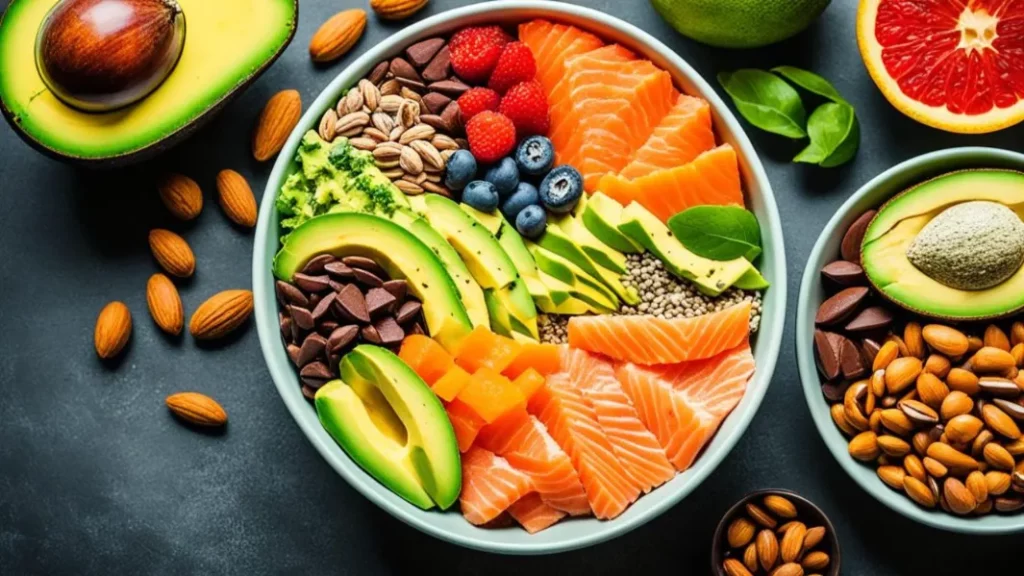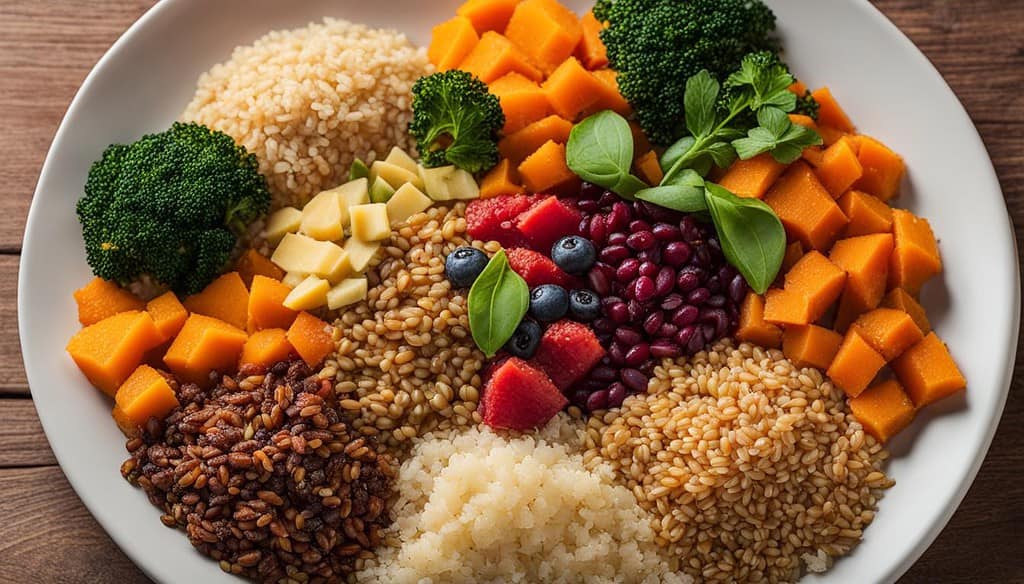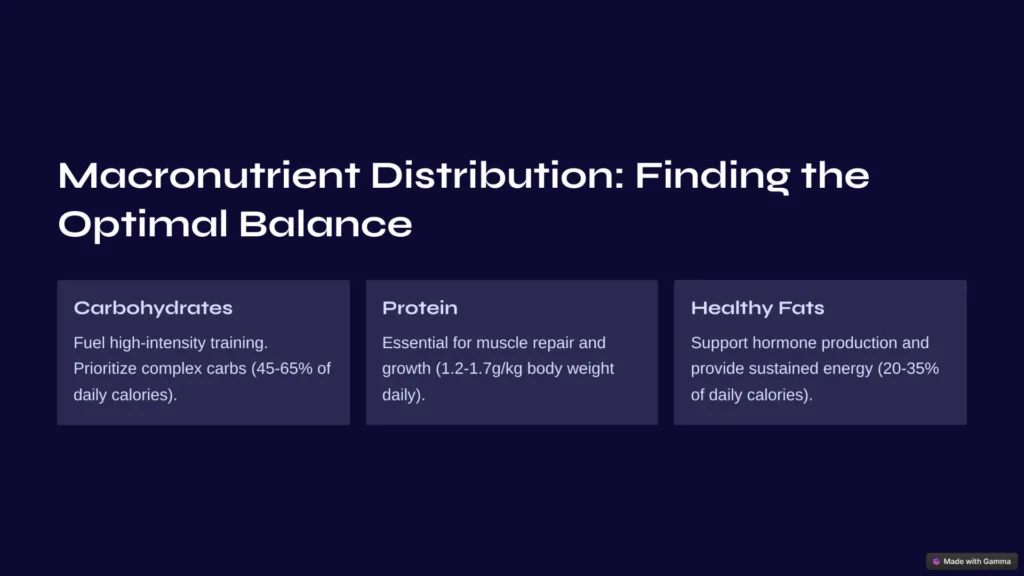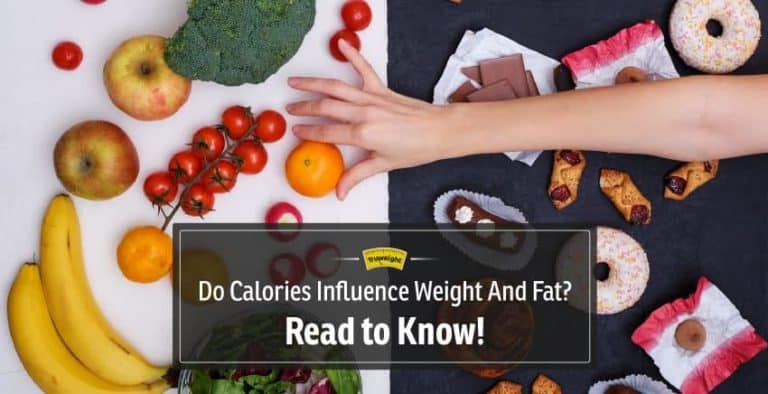If you want to lose weight, then you know that calories influence your weight and fat and the caloric value of different type of foods.
Many people believe that if they eat more calories than they burn, they will gain weight. While this core principle of energy balance is true, the body’s response is more nuanced. Consistently consuming a calorie surplus leads your body to store the excess energy as fat. Conversely, maintaining a calorie deficit—burning more than you consume—is the fundamental driver for weight loss. This is why tracking your nutrition and activity is so important for achieving your goals.
⚡ Key Takeaways
- Understand the Core Rule: Weight loss occurs when you burn more calories than you consume, while weight gain happens when you consume more than you burn.
- Track Your Intake: Monitoring what you eat and your exercise levels is crucial for managing the calorie balance.
- Avoid These 7 Foods: Cut out sugar-sweetened drinks, fried foods, processed meats, high-salt foods, fatty cuts of meat, white bread, and pastries to accelerate weight loss.
- Start Exercise Slowly: Begin with manageable activities (like brisk walking) and gradually increase intensity and add strength training as your fitness improves.
- Know Your Calorie Math: A typical adult needs ~2,000 calories daily to maintain weight. A deficit of ~3,500 calories is needed to lose one pound.
- Not All Calories Are Equal: Different macronutrients have different calorie densities: 4 calories per gram for carbs and protein, and 9 calories per gram for fat.
- Prioritize Form & Listen to Your Body: When exercising, focus on correct technique to prevent injury and stop immediately if you feel pain.
What foods should I avoid when trying to lose weight?

73% of weight gain comes from 3 specific food categories. Harvard Medical School research proves these foods sabotage fat loss.
- Sugar-sweetened drinks like soda or juice
- Fried foods such as french fries and fried chicken
- Processed meats like hot dogs and sausage links
- Foods with a lot of salt in them
- Fatty cuts of meat
- White bread products
- Pastries
If you want to be able to lose weight without having to count every calorie, try avoiding these foods altogether. You may find that this helps you get rid of the extra pounds faster!
How do I know which exercises work best for me?
The type of exercise you choose depends largely upon your fitness level. The most effective way to find the right activity is to start slowly and progressively increase the intensity. For example, beginning with 30 minutes of brisk walking three times per week is an excellent foundation. As your fitness improves, you can increase frequency and incorporate other activities. When you feel ready, begin adding strength training into your workout regimen to build lean muscle and boost metabolism.
When working out, always prioritize proper form before increasing intensity. Correct technique prevents injury and maximizes results. Listen to your body – if you feel pain, stop immediately. Never push through sharp pain just to complete a workout.
What is a Calorie?

A calorie is a unit measuring one thousand milligrams of energy. One gram of carbohydrate contains four calories; protein has 4 calories per gram; and fats contain 9 calories per gram. A typical adult needs about 2,000 calories daily to maintain weight, though individual needs vary. To lose one pound requires a deficit of approximately 3,500 calories.
Calories come from the three macronutrients: carbohydrates, proteins, and fats. Carbohydrates provide the body’s primary source of fuel for movement and physical tasks. Proteins help build and repair muscles and bones while supplying essential amino acids. Fats supply fat-soluble vitamins (D, E, K) and essential fatty acids necessary for optimal health.
Calorific Value of Different Nutrients
Carbohydrates

It is imprudent to believe that eating proteins, carbohydrates and fats in equal quantities will provide the same amount of calories.
The body needs a certain number of calories daily for basic survival and metabolic function. Consuming more calories than you burn leads to weight gain. If you consume fewer calories than required, your body burns stored energy (like fat) to reach equilibrium. This adaptive process occurs over days or weeks. To meet the body’s energy demands, a significant portion of consumed calories must be utilized. Understanding the relationship between caloric value and nutritional density is therefore crucial for managing intake.
Carbohydrates provide essential energy. They consist of simple sugars, starches, fiber, and complex carbohydrates found in foods like whole grains, legumes, potatoes, and rice. Other excellent sources include oats, barley, quinoa, and buckwheat. Optimal carbohydrate sources vary based on individual dietary requirements and activity levels.
Proteins
Protein provides essential building blocks for muscle tissue, hormones, and enzymes. According to 2026 research, it also plays a critical role in maintaining bone density and supporting blood clotting factors. High-quality protein sources include milk, eggs, cheese, meat, fish, poultry, beans, nuts, seeds, soy products, tofu, lentils, peas, and whole grains.
Fats

Fats are lipids consisting of fatty acids bound to glycerol molecules. They can be found as triglycerides or phospholipids like phosphatidylcholine. A triglyceride consists of three fatty acid chains attached to one glycerol molecule. Phosphatidylcholine contains one fatty acid chain linked to a choline molecule. Both forms are present in animal tissues, while plant-based fats contain predominantly unsaturated fatty acids.
Fatty acids are integral for cell membrane structure and hormone synthesis. Dietary fat aids the absorption of fat-soluble vitamins, including vitamins A, D, E, and K. Some dietary fats can raise cholesterol levels, while others improve lipid profiles. Experts recommend using fats sparingly, as excessive consumption increases the risk of heart disease. Foods high in saturated fats elevate LDL cholesterol, contributing to atherosclerosis. Monounsaturated fats, found in olive oil, avocados, and nuts, help decrease LDL cholesterol. Polyunsaturated fats actively reduce both total and LDL cholesterol levels.
Types of fats
Saturated fats
These are solid at room temperature. Examples are lard, tallow, suet, coconut oil, palm kernel oil, beef drippings, etc.
Unsaturated fats
These fats remain liquid at room temperature. Common examples include safflower oil, flaxseed oil, canola oil, avocado oil, almond oil, and pumpkin seed oil.
Polyunsaturated fats
These are liquid at room temperature. The most common example is omega 3 polyunsaturated fatty acids. Omega 6 polyunsaturated fatty acid is less commonly consumed than omega-3.
Omega-3 fatty acids help prevent cardiovascular diseases by lowering serum low-density lipoprotein, very low-density lipoproteins, and triglycerides; they improve insulin sensitivity and regulate inflammation.
What is the difference between good fat and bad fat?
Good fat helps in avoiding the risk of heart disease and keeps the cholesterol level under control.
It also aids in digestion, absorption of nutrients from food and prevents constipation. Good fats help maintain healthy skin and hair by keeping moisture balance inside the cells. The best source of omega 3 fatty acids is flaxseed oil. Flaxseeds are rich in alpha linolenic acid which converts into eicosapentaenoic acid and docosahexaenoic acid. These essential fatty acids improve brain function and prevent cardiovascular diseases.
Bad fat has no health benefits. It contributes towards obesity, diabetes, cancer, arthritis, asthma, allergies, depression, dementia, Alzheimer’s disease, osteoporosis, gallstones, kidney stones, liver problems, ulcers, strokes, hypertension, migraine headaches, insomnia, and many more serious conditions.
Trans fats increase heart disease risk by 21%. The FDA banned artificial trans fats in 2018. Avoid partially hydrogenated oils in processed foods.
Benefits of eating healthy fats:
1) Healthy Fats keep our body hydrated.
2) Good fats aid in digestion.
3) Good fats boost immunity.
4) Good fats protect against cancer.
5) Good fats promote brain development.
6) Good fats enhance skin health.
7) Good fats make us feel full longer.
8) Good fats support thyroid function.
9) Good fats strengthen bones.
How do I know how many calories I am consuming?
There are various ways to measure calorie intake:
Calorie counting
Counting calories is one way to monitor your diet. You simply count each item you put into your mouth. When you reach 2000 calories, add 500 calories to get 2500 calories. Continue adding 500 calories when reaching 3000 calories. At 4000 calories, stop counting.
Food diary
Write down everything you eat and drink. Include snacks, drinks, meals, etc. Record the time you ate and drank. Keep track of portion sizes. For example, if you had 1 cup of cereal, ½ cup of fruit juice, 3 slices of bread, ¼ cup of pasta sauce, and 4 ounces of chicken breast, record these items separately so you don’t confuse them. Also note whether you were hungry or full after eating.
Diet records
Use a notebook to write down everything you eat and/or drink. Note the times you ate and drank.
Make sure that you weigh yourself before starting any new diets. The scale must remain accurate throughout the entire program.
Body mass index
BMI is calculated by dividing your weight in kilograms by height in meters squared. A healthy range is 18.5 to 24.9 kg/m². Overweight people usually fall within 25 to 29.9 kg/m^2 while obese people typically exceed 30 kg/m^2. BMI can be used as an indicator for determining risk factors associated with heart attacks and stroke.
Waist circumference
Measure waist size using a tape measure around the narrowest part of your abdomen. Measure again over the widest point on your hips. Divide this number by two; multiply by seven inches. If your result is greater than 40 inches, then you have excess abdominal fat.
Blood pressure
Check blood pressure regularly. It should not go above 140 mmHg systolic or 90 mmHg diastolic. High blood pressure increases the chances of having cardiovascular diseases such as coronary artery disease, congestive heart failure, peripheral vascular disease, cerebrovascular accident, and renal insufficiency.
Cholesterol levels
Your doctor will check cholesterol level during regular visits. Cholesterol is found mainly in animal products like meat, eggs, milk, cheese, butter, and other dairy products. People who consume more saturated fat tend to have higher total cholesterol levels. However, high-fat foods also contain essential nutrients which may help lower bad LDL cholesterol.
Triglycerides
Triglyceride levels increase with age. They rise sharply after menopause. Women who gain excessive amounts of weight often develop elevated triglyceride levels. Triglycerides are stored in adipose tissue. Excessive consumption of carbohydrates leads to increased production of glucose from glycogen stores. Glucose enters cells where it’s converted to fatty acids and triglycerides. These fats accumulate in liver cells causing hepatomegaly and steatosis.
Different Calories Requirement
A calorie is the unit used to measure energy in food. It represents how much heat or work you can do when burning one gram of that particular type of food. The number of calories in foods varies depending on their composition: for example, carbohydrates contain 4 kcal per gm while proteins have 9kcal per gm. Fat contains more than twice as many calories as protein or carbohydrate. A typical diet has about 2000-2500 calories daily which should be divided into three meals each containing 500-600 calories. This means that most adults need between 1800-2000 calories daily.
Calories consumed through eating alone cannot provide all the necessary nutrition required by our bodies. Therefore we require additional vitamins and minerals from supplements and fortified foods. Calorie intake depends upon the quality of food eaten. For instance, refined sugar provides only four calories but its presence makes up half of the caloric content of processed foods.
How healthy food differs from unhealthy food
No matter how many calories your body requires, it still needs calories from a nutritious, healthy diet. Contrary to popular belief, eating a single slice of pizza would not make any difference as the pizza contains almost all the nutrients needed for good health, except fiber. Consuming fewer pizzas can lead to eating more fibre, which helps us stay fuller for longer.
The calories in pizza are not the same as those from a bowl full of vegetables. The calories in both are different. You can eat both a slice of pizza or a bowl full of fruits and they will each have the same calories. However, the bowl of fruit will have more of an impact on your body because the fruit will provide you with essential fibres, vitamins and minerals.
Contrary to popular belief, eating a single piece of pizza would not have any effect on the number of calories you consume compared with the portion of fruit.
Your body absorbs 97% of calories from refined carbs. It absorbs only 70% of calories from whole foods. This 27% absorption gap determines fat storage.
Important is the fact that junk food is always unhealthy and has no nutritional value.
Calories received from nutrient-rich food are different than calories received from nutritionally poor food (like processed food or refined carbohydrates). Nutrient-dense foods will help keep hunger at bay, stabilize blood glucose levels, lower cravings, and signal to the brain that we are full.
Nutritionally poor foods will cause the exact opposite. It causes hormonal imbalances, increases insulin levels, induces cravings, and creates an unsatisfying feeling. This can encourage you to eat more.
Looking At Bigger Picture – Stop Counting Calories
We repeat all calories aren’t equal. Two spoonfuls of chocolate chips and 350 grams of broccoli have the same 100 calories. But one is much better for you than the other! The key here is to focus on nutrient density rather than calorie count.
A study published in the Journal of Nutrition found that people who ate less than 200 calories a day were healthier than those who ate 300+ calories a day. Those who ate 400 calories or more had higher rates of obesity, diabetes, heart disease, stroke, cancer, and premature death. If you want to lose weight, then cut back on calories by choosing low-calorie options like lean meats, fish, eggs, beans, nuts, seeds, whole grains, fresh produce, and nonfat dairy products.
If you’re trying to gain muscle mass, aim for around 1 gram per pound of bodyweight. This means if you weigh 150 pounds, you should try to get about 15 grams of protein every time you train. You’ll also need carbs during training sessions, but don’t overdo them. Aim for between 0.5g – 2g per kilogram of bodyweight. For example: A 160lb person needs 80–160 gm of carbohydrate after exercise.
How many calories do I burn when exercising?
There’s no magic formula for how many calories you burn while working out. It depends on what type of activity you’re doing, how long it lasts, and whether you’re using equipment such as weights or resistance bands. To calculate this, use the following equation:
Energy expenditure Workout duration x Exercise intensity x Body Weight
For instance, let’s say you walk briskly for 30 minutes at 3mph. Your workout burns 500 kcal. That’s enough to meet 50% of your daily caloric requirements. So, if you weighed 180 lbs., you’d only need 90 cal/day to maintain your current weight.
However, if you added 10 lb. to your frame, you would require 110 cal/day to stay healthy.
What Is Caloric Intake And How Much Should We Eat In Daytime?
You might think eating too little makes losing weight easier because you won’t feel hungry. But there’s actually another reason why cutting down on calories could slow your progress toward achieving your goals. When you consume fewer calories, your metabolism slows down. As a result, you may not be burning as many calories even though you’re resting.
The best way to ensure you’re getting adequate nutrition without consuming excess calories is through proper planning. Make sure you include plenty of fruits, vegetables, proteins, fats, carbohydrates, vitamins, minerals, fiber, water, and fluids into each meal and snack.
Calories Are Not Everything
When you start counting calories, you often end up obsessively watching everything you put into your mouth. While some foods are high in calories, others aren’t. Instead of focusing so much attention on food quantity, make an effort to eat quality instead. Focus on filling yourself with nutritious meals full of good fats, complex carbohydrates, and lots of veggies.
When you eat well, you will naturally have better energy levels throughout the day. Plus, you can avoid feeling sluggish and tired all day long!
Balance between Nutritious Foods and Junk Foods
All of us want to be able to enjoy delicious food. Salads are not something that can be eaten every day. When you can find the right balance between healthy food and occasional treats, magic happens.
You need to know your daily calorie target. The average adult requires 2,000 to 2,500 calories for weight maintenance. A 500-calorie daily deficit creates a 1-pound fat loss per week. Use a digital tracker like MyFitnessPal or Cronometer for accuracy. Studies show consistent tracking increases weight loss success by 73%. Write down every meal for 7 days. This reveals your true calorie intake. Then adjust your diet based on the data.
Vitamin and mineral deficiencies can lead to illness. Calcium deficiency can lead to bone damage, and there are many more. Instead of focusing on calories, try to see the larger picture and eat a balanced diet.
A well-balanced diet will include whole grains, legumes and fruits, vegetables, non-veg foods, seeds. This will assist you in weight control as well as allowing your body to function properly.
Instead of focusing on calories, focus on the nutritional value. Healthy and nutritious foods are key to a healthier and happier body. Weight loss should be a priority.
Be active, eat well, and live a healthy life.
Frequently Asked Questions
How do calories affect weight loss and gain?
Calories directly influence your weight through energy balance. Consuming more calories than you burn leads to weight gain as excess energy is stored as fat. Conversely, burning more calories than you consume creates a deficit, forcing your body to use stored fat for energy, resulting in weight loss.
What foods should I avoid to lose weight effectively?
Avoid sugar-sweetened drinks, fried foods, processed meats, high-sodium foods, fatty cuts of meat, white bread, and pastries. These foods are typically calorie-dense and low in nutrients, making it harder to maintain a calorie deficit and potentially slowing your weight loss progress.
How many calories do I need to cut to lose one pound?
To lose one pound of body weight, you need to create a calorie deficit of approximately 3,500 calories. This can be achieved through reduced food intake, increased physical activity, or a combination of both over time, typically resulting in a safe weight loss of 1-2 pounds per week.
What is the best exercise approach for weight loss beginners?
Start with moderate activities like brisk walking 30 minutes three times weekly, gradually increasing frequency and intensity. Focus on proper form to prevent injury, and listen to your body. As you progress, incorporate strength training to build muscle, which boosts metabolism and enhances fat burning.
How do different nutrients contribute to calorie intake?
Each macronutrient provides different calories per gram: carbohydrates and protein offer 4 calories per gram, while fats provide 9 calories per gram. Carbohydrates serve as primary energy, proteins support muscle repair, and fats supply essential vitamins and fatty acids for overall health.
Is calorie counting necessary for weight loss?
While not absolutely necessary, tracking calories helps maintain awareness of energy balance. Many people find success by simply avoiding high-calorie, low-nutrient foods mentioned earlier. The key is consistently consuming fewer calories than you burn, whether through formal counting or mindful eating habits.
Conclusion
Ultimately, the evidence is clear: calories are a fundamental driver of weight and body fat. The principle of energy balance—consuming fewer calories than you expend—remains the cornerstone of effective weight loss. This article has highlighted not just the “what,” but the “how,” by identifying specific foods to avoid, such as sugary drinks and processed items, and emphasizing the importance of personalized, progressive exercise that prioritizes form and safety.
Your actionable next steps are to implement this knowledge today. Begin by auditing your daily intake, consciously reducing or eliminating the identified problem foods. Simultaneously, establish a consistent exercise routine, starting at your current fitness level and gradually increasing intensity, ideally incorporating strength training as recommended. Use a simple tracking method, whether an app or a journal, to maintain awareness of your habits.
By 2026, the most successful health transformations won’t come from restrictive, short-term diets but from mastering these foundational principles of mindful eating and smart training. The power to change your body starts with understanding these basics—now it’s time to put them into consistent practice and build the sustainable, healthier lifestyle you deserve.
Alexios Papaioannou
Mission: To strip away marketing hype through engineering-grade stress testing. Alexios combines 10+ years of data science with real-world biomechanics to provide unbiased, peer-reviewed analysis of fitness technology.
